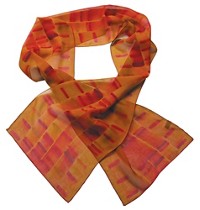Advertisement
Grab your lab coat. Let's get started
Welcome!
Welcome!
Create an account below to get 6 C&EN articles per month, receive newsletters and more - all free.
It seems this is your first time logging in online. Please enter the following information to continue.
As an ACS member you automatically get access to this site. All we need is few more details to create your reading experience.
Not you? Sign in with a different account.
Not you? Sign in with a different account.
ERROR 1
ERROR 1
ERROR 2
ERROR 2
ERROR 2
ERROR 2
ERROR 2
Password and Confirm password must match.
If you have an ACS member number, please enter it here so we can link this account to your membership. (optional)
ERROR 2
ACS values your privacy. By submitting your information, you are gaining access to C&EN and subscribing to our weekly newsletter. We use the information you provide to make your reading experience better, and we will never sell your data to third party members.
Environment
Stinky memories
November 27, 2006
| A version of this story appeared in
Volume 84, Issue 48
The picture of Jacek Koziel's undergraduate student analyzing the gas chromatograph's sniff port to determine the stinky components of livestock yard air brought back memories of similar work discussed at a group meeting back in graduate school (C&EN, Sept. 25, page 104). My Columbia University colleague, Bill Hersh, now at Queens College, presented an interesting paper from the scientific literature involving aged liquid swine manure (Bull. Chem. Soc. Japan 1979, 52, 114). Their experiment displayed interesting parallels to the current work, such as sniffing the exit of their thermal conductivity GC as the volatile compounds from the distillate of swine manure eluted, something they termed "organoleptic analysis."
You can imagine if the diluted stuff smelled bad, what the experience of sniffing pure stench must have been like. I think we owe Koziel's group and others similarly involved in improving our olfactory environment a vote of thanks, rather than the guffaws that such self-sacrificing research typically receives.
Still, you have to appreciate the humor that must underlie such work. For instance, the 1979 paper ends with the acknowledgment: "The authors wish to thank Mr. Minoru Kuriyama, a hog raiser near Tsukuba, New Town, Ibaraki Prefecture, for his offer of liquid swine manure." Now, there's a conscientious author!
Jaan Pesti
Yardley Pa.






Join the conversation
Contact the reporter
Submit a Letter to the Editor for publication
Engage with us on Twitter